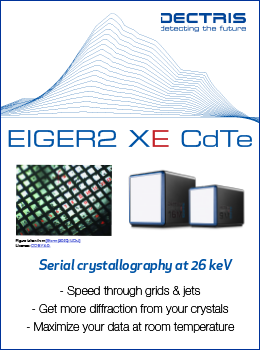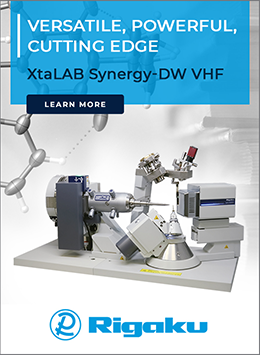


Research news
An introduction to crystallography research on SARS-COV-2 (COVID-19) via X-ray diffraction at synchrotrons around the world
![Thumbnail [Thumbnail]](https://www.iucr.org/__data/assets/image/0011/148538/virus.png)
Since the Middle Ages, human beings have faced different pandemics caused by both bacteria and viruses. The last two terrible pandemics happened over an interval of approximately 100 years: first, the Spanish influenza pandemic (1918–1920) was one of the deadliest humans have ever had to face, and second, the ongoing SARS-CoV-2, not as deadly as the previous pandemic, but highly expansive and contagious. Spanish influenza killed, at the time, more than 40 million people around the world. This might have been due to the lack of the many facilities in biotechnology to develop vaccines [1] – something that we do not lack nowadays. More recently, the severe acute respiratory syndromes SARS, MERS (both caused by coronaviruses) and swine flu (caused by an influenza virus), among others, have caused the deaths of millions of people around the world [2]. In the present case, the RNA virus called SARS-CoV-2 has spread at a high speed, infecting people from nearly all countries in the world in a very short time [3]. During the last few months, this virus has not only killed people of different ages (though mostly adults), but it has also affected us socially and economically by changing the world through measures such as lockdowns, self-isolation and social distancing, causing unprecedented global disruption of a magnitude never imagined before [4]. However, this is probably the first time that the world is working together to beat a common enemy. Scientists from all over the world are working against the clock to develop a vaccine or drugs against this virus based on structural research (X-ray and cryo-EM) and molecular biology techniques [5–7]. The development of drugs uses the knowledge already collected from other severe acute respiratory syndromes, AIDS and diseases such as malaria. This knowledge was based on structural data and 3D structures of proteins already solved. Additionally, the efforts of medical doctors, molecular biologists, biochemists, microbiologists, computational scientists and immunologists are immediately focused on knowing the particular characteristics of this virus. Chemical and biological approaches are aimed at sorting out this problem in as short a time as possible. In the Americas as well as in many other countries, some novel initiatives are focused on understanding the virus structure and its mechanism of action in different ways. All these initiatives are concentrating on getting the opportunity to develop some kind of drug against this virus or even a new vaccine.
Currently, the entire world is dealing with the search for a cure for the SARS-CoV-2 coronavirus pandemic [8–10]. In some countries, this virus has been apparently less aggressive than in others, leading people to speculate about the possibility of the virus being artificially made [11]. However, after some serious and careful investigations, most researchers do not accept this speculation, thus taking the line that this RNA virus evolved naturally. The term coronavirus comes from the existence of the spike protein (S), which is a 210–230 kDa glycoprotein with 23 potential N-glycosylation sites [10]. This glycoprotein binds to angiotensin-converting enzyme 2 (ACE2). These enzymes are receptors located in human cells, in the membrane protein surrounding the cell and in the respiratory tract [12, 13]. In humans, the SARS-CoV-2 strains typically prefer terminal NeuAcα2-6Gal epitopes [neuraminic acid type and glycosidic linkage (α2-3 or α2-6), which are richly expressed along the upper respiratory tract]. The process is influenced by fucosylation. Afterwards, the immune system starts the detection response based on chemical recognition via specialized antigen-presenting cells. This, in a few words, is the pathway that this virus uses to get into the human body via the upper respiratory tract. This pathway also shows how the virus can be destroyed by a strong immune system (given all the favorable conditions in healthy patients). On the other hand, there are some clinical reports that suggest that patients with chronic medical conditions such as cardiovascular disease, diabetes and obesity are more likely to be infected by this virus [14]. Currently, there are no markers that predict the virus susceptibility and reinfection. Some compelling clinical reports have established that the ABO blood types, which are carbohydrate epitopes located on the surface of human cells, might play an important role in this chemical recognition. In Mexico, a few groups have been interested in this issue, and some initiatives are being supported by the National Council for Science and Technology (CONACYT). It is important to mention that during the SARS-CoV pandemic from 2003 to 2004, and possibly the present pandemic in 2020 as well, the most infected individuals were those with groups A and B, whereas those with group AB were only slightly affected. However, group O individuals seemed to be relatively resistant to this infection [15]. The interactions of different types of fucoses (specific for each ABO blood type) with the glycoprotein S and the ACE2 receptors could provide important insight into producing tailored drugs based on this stereo-specific interaction or chemical selectivity [16, 17]. There is even a hypothesis describing the seasonality and selective trends in viral acute respiratory tract infections. The effect of temperature causing a kind of seasonality is related to changes in temperature, assuming that low temperatures or host chilling activate dormant virions [18].
At the beginning of the pandemic, scientists focused on structure elucidation of macromolecules using powerful techniques, including X-ray crystallography. This is the most powerful technique for macromolecular structure determination, reaching quasi-atomic resolution in the most favorable cases, and without a priori limitations on the size and complexity of the molecules being studied [19, 20]. Use is made of the free-electron laser (FEL) with micro- to nano-sized crystals, which generates extremely intense X-ray pulses of tens of femtoseconds duration with nine-to-ten orders of magnitude higher peak brilliance than third-generation synchrotrons [21–23]. In addition, cryo-EM is used with near-atomic resolution for biomolecular structures [24, 25]. Many research facilities during the pandemic faced working under reduced operations, limiting research to COVID-19 only. There has been some progress on COVID-19, with the possibility of a viable vaccine being produced by the end of this year by either private companies or even individual countries under the umbrella of the World Health Organization. The cost of the vaccine will not be comparable with the damage caused by this virus to the less-protected people in some societies. The following articles describe the research efforts of scientists from around the world in conjunction with synchrotron facilities.
References
[1] Barro, R. J. et al. (2020). NBER Working Paper No. 26866.
[2] Song, Z. et al. (2019). Viruses, 11, 59/1–59/28.
[3] Hunter, P. (2020). EMBO Rep. 21, e50334.
[4] Loayza, N. & Pennings, S. (2020). Research & Policy Briefs from the World Bank Malaysia Hub, Issue March 26, No. 28.
[5] Zhang, L. et al. (2020). Science, 368, 409–412.
[6] Yan, R. et al. (2020). Science, 367, 1444–1448
[7] Merck, A. et al. (2016). Cell, 165, 1698–1707.
[8] Ciotti, M. et al. (2019). Chemotherapy, 64, 215–223.
[9] Wu, F. et al. (2020). Nature, 579, 265–269.
[10] Wrapp, D. et al. (2020). Science, 367, 1260–1263.
[11] Guruprasad, L. (2020). chemRxiv: https://dx.doi.org/10.26434/chemrxiv.12190449.v1
[12] Callawey, E. & Spencer, N. (2020). Nature, 580, 576–577.
[13] Notkins, A. L. et al. (1970). Annu. Rev. Microbiol. 24, 525–538.
[14] Zhao, J. et al. (2020). medRxiv: https://dx.doi.org/10.1101/2020.03.11.20031096
[15] Cheng, Y. et al. (2005). JAMA, 293(12), 1450–1451.
[16] de Mattos, L. C. (2016). Rev. Bras. Hematol. Hemoter; Braz. J. Hematol. Hemother. 38(4), 331–340.
[17] Imberty, A. & Varrot, A. (2008). Curr. Opin. Struct. Biol. 18, 567–576.
[18] Shaw Stewart, P. D. (2016). Med. Hypotheses. 86, 104–119.
[19] Zhang, L., Daizong, L. et al. (2020). Science, 24, 409–412.
[20] Shang, J., Ye, G., Shi, K. et al. (2020). Nature, 581, 221–224.
[21] Moreno, A. (2017). Advanced Methods of Protein Crystallization, Crystallography: Methods and Protocols, Methods in Molecular Biology series, Vol. 1607, Chapter 3, pp. 51–76.
[22] Ishchenko, A. et al. (2018). Curr. Opin. Struct. Biol. 51, 44–52.
[23] Maia, F. R. N. C. et al. (2016). J. Appl. Cryst. 49, 1117–1120.
[24] Pinto, D., Park, Y., Beltramello, M. et al. (2020). Nature, 583, 290–295.
[25] Yan, R., Zhang, Y., Li, Y., Xia, L., Guo, Y. & Zhou, Q. (2020). Science, 367, 1444–1448.
Tiffany L. Kinnibrugh is at the X-Ray Science Division, Advanced Photon Source, Argonne National Laboratory, USA, and Abel Moreno at the Instituto de Química, Universidad Nacional Autonoma de Mexico ([email protected]).
Copyright © - All Rights Reserved - International Union of Crystallography








